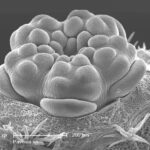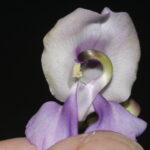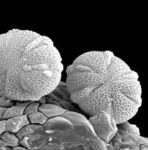Flowers are key structures in the evolution of angiosperms. They form the reproductive organs in which the sexual stages develop. The immense diversity of flowers reflects a variety of adaptations to pollen transfer vectors in the course of evolution. It originates from flower meristems which have many more morphogenetic options than vegetative meristems.
Our interest in flowers goes from flower meristems and specific developmental conditions to adult forms and their function as pollination units. This broad approach provides insights into the interplay of given conditions, developmental regulation processes and natural selection in shaping flowers.
Co-variation during development results in synorganized floral structures able to establish complex pollination mechanisms. Morphogenesis is particularly important for the corroboration of homologies as characters can be modified or even masked during development. In an evolutionary context, changes during ontogeny (e.g., heterochrony) can influence biotic interactions and promote speciation.



